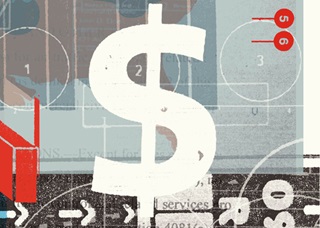 The president’s latest budget plan does not include user fees but does offer increased funding for NextGen modernization and air traffic services.
The president’s latest budget plan does not include user fees but does offer increased funding for NextGen modernization and air traffic services.
The 2017 fiscal year budget proposal released Feb. 9 would provide $15.9 billion in funding for the FAA, up just slightly from the president’s $15.85 billion request for 2016 but still lower than the $16.28 billion Congress provided to fund the agency in 2016.
“We’re pleased to see that the budget proposal is focused on modernizing our aviation system without resorting to user fees,” said Jim Coon, AOPA senior vice president of government affairs.
From that $15.9 billion in proposed funding, $9.99 billion would go to FAA operations, which includes managing the air traffic control system. That’s an increase over the $9.91 billion enacted for the 2016 fiscal year.
Another $2.83 billion would go to facilities and equipment, down slightly from the $2.86 billion enacted the previous year. But funding for capital improvements related to NextGen modernization, which is part of the facilities and equipment account, would go up by $22 million to $877 million in 2017. The account also includes proposed funding of $31 million for ongoing implementation of Automatic Dependent Surveillance-Broadcast, down from $45 million in 2016, as well as $124 million to pay for satellite subscription services, down from $139 million the previous year. At the same time funding for performance-based navigation is set at $18 million, up from $13 million in 2016.
Funding for research, engineering, and development activities would increase slightly under the president’s proposal, going from $166 million in 2016 to $167.5 million in 2017. Within that figure is a proposed $5.8 million for ongoing efforts to move to an unleaded aviation gasoline, down from the $6 million provided in 2016.
The recommended budget for Airport Improvement Program (AIP) grants is the same as the previous year, with a proposed $2.9 billion obligation limitation for the program, significantly less than the $3.35 billion in funding enacted in each of the past two years. But the money would be focused on smaller general aviation and commercial airports that don’t have access to other revenue sources. It also would eliminate guaranteed AIP entitlements at large hub airports, giving them more flexibility to generate alternative funding streams. At the same time, the budget would nearly double the passenger facility charge at all commercial service airports from $4.50 to $8.
For operators of business aircraft, the president’s budget would lengthen the depreciation schedule from the current five years to seven years, bringing it in line with commercial aircraft depreciation.
On four separate occasions, President Barack Obama’s budget proposals have included various forms of user fees, most often a $100-per-flight fee for GA. But strong opposition from AOPA and others seems to have steered the White House away from including the fee for the past two years.
The president’s budget proposal was released one day before a planned hearing on House FAA reauthorization legislation that includes a major shakeup of the agency. That legislation would take a very different approach to managing the nation’s air transportation system, privatizing the air traffic control system and imposing user fees on some GA users and the airlines.



